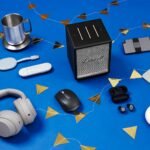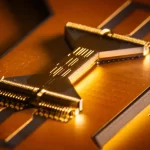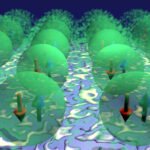Switching ‘spin’ on and off (and up and down) in quantum materials at room temperature
A team of international researchers led by the University of Cambridge has achieved a breakthrough in controlling the interaction of light and quantum ‘spin’ in organic semiconductors, even at room temperature. Spin refers to the intrinsic angular momentum of electrons, which can be manipulated to encode information. This development could have profound implications for the field of quantum technology and the development of more efficient and effective computers and sensors.
The researchers used particles of light to act as a ‘switch’ that could control the spin of electrons. By shining light on specific molecular structures, they were able to align the spin states of electrons, essentially making them behave like tiny magnets. Even after the light was removed, the electrons remained connected through their aligned spins.
Traditionally, achieving this level of control over quantum properties required extremely low temperatures, making practical applications challenging. However, the team’s method enabled quantum behavior control at room temperature, significantly expanding the potential applications of quantum technology.
This breakthrough has the potential to revolutionize various fields that rely on quantum principles, from computing to sensing. By successfully coupling spin states to photons and achieving control at room temperature, the researchers have taken a significant step toward the development of practical quantum applications.
The team employed a unique approach by designing molecular units connected by bridges. These bridges, made of hydrocarbon anthracene, facilitated the alignment of electron spins when exposed to light. This level of control and alignment has vast implications for building more flexible and efficient quantum technologies.
The study’s lead researcher, Sebastian Gorgon from the University of Cambridge, emphasized the collaborative nature of the achievement, with contributions from researchers across multiple fields and countries. He also highlighted the potential for their approach to open up new directions in the world of quantum technologies.
By achieving a level of spin coupling between building blocks of molecules that could be controlled and manipulated, the team has made a significant stride toward practical applications of quantum technology that can operate at room temperature.































